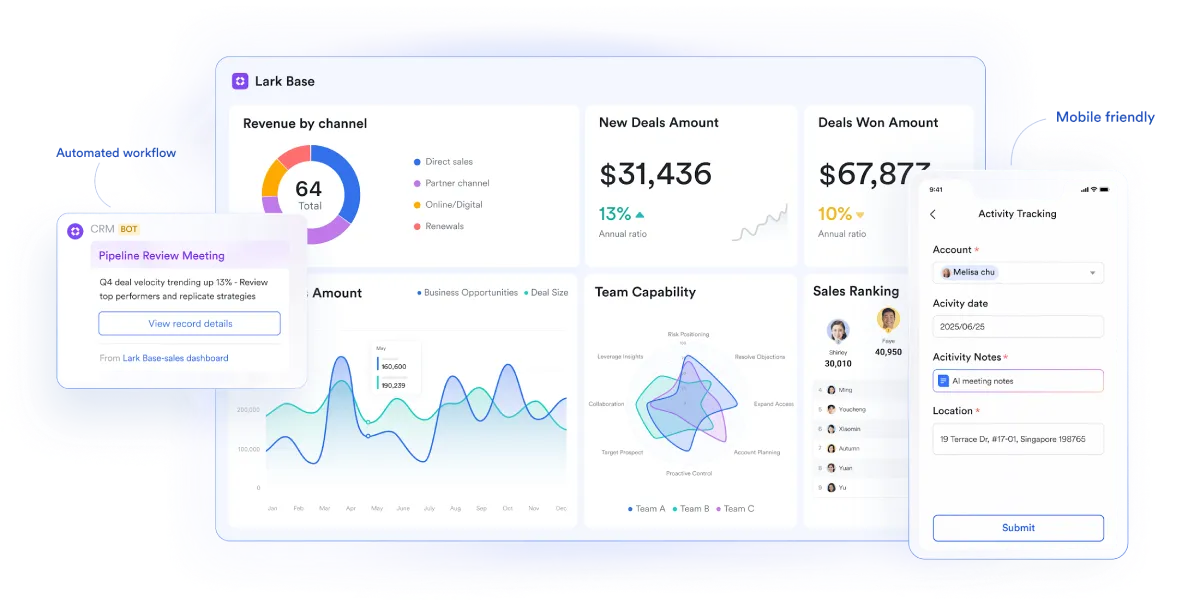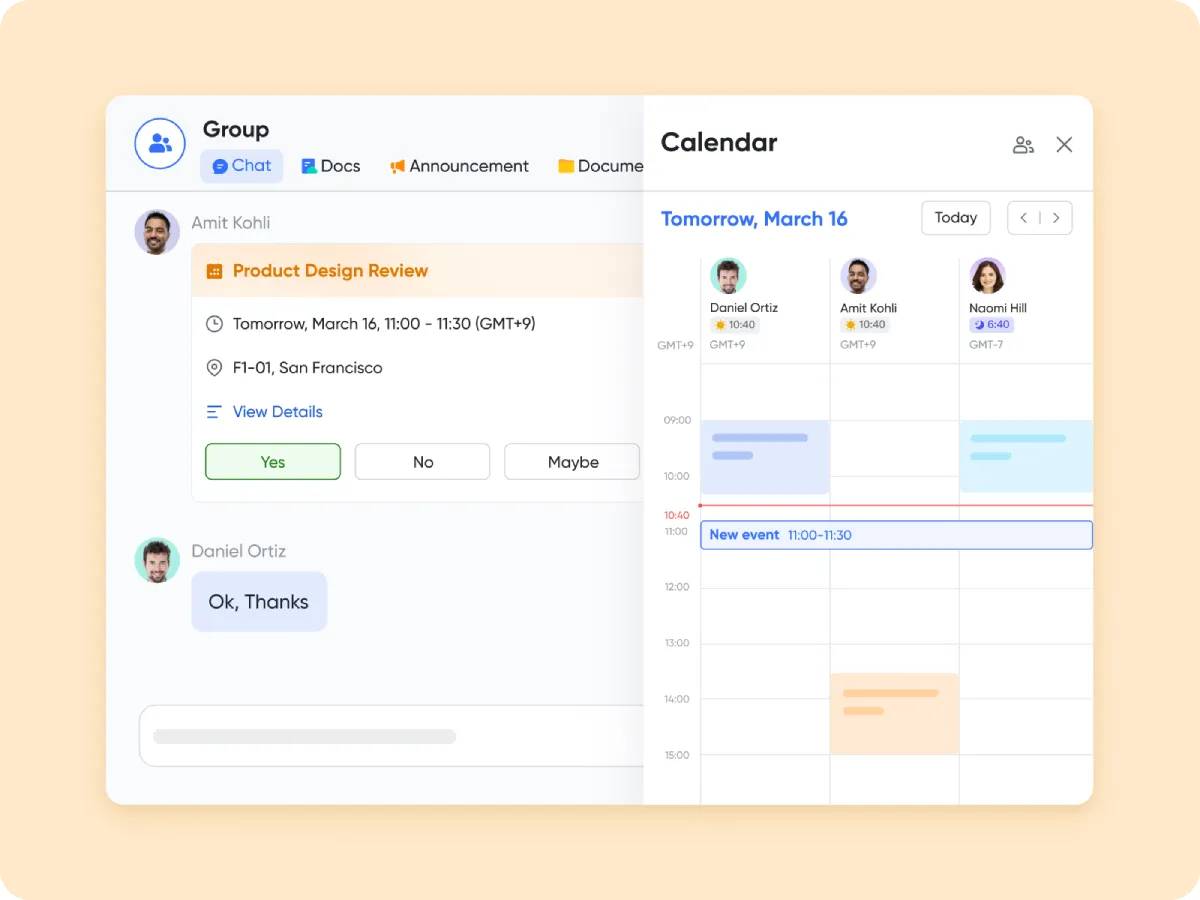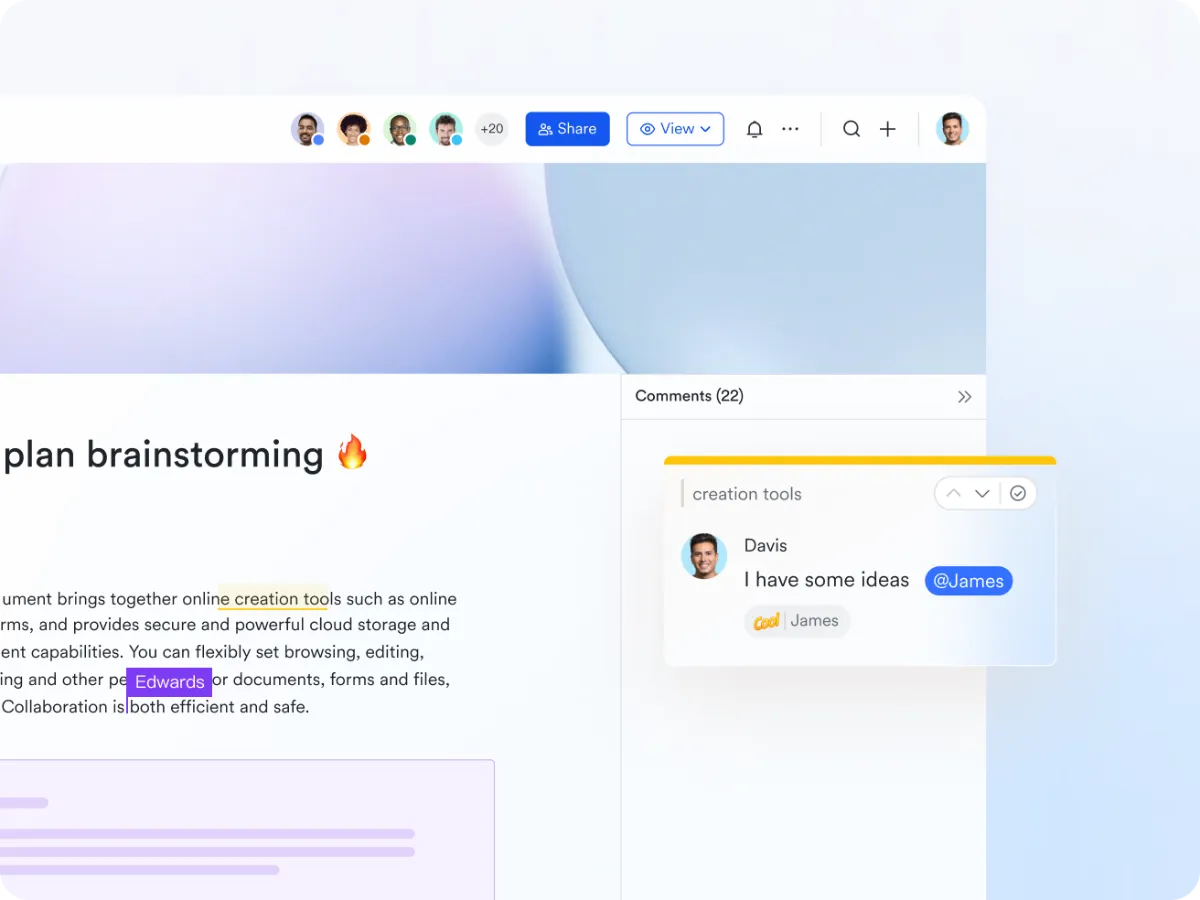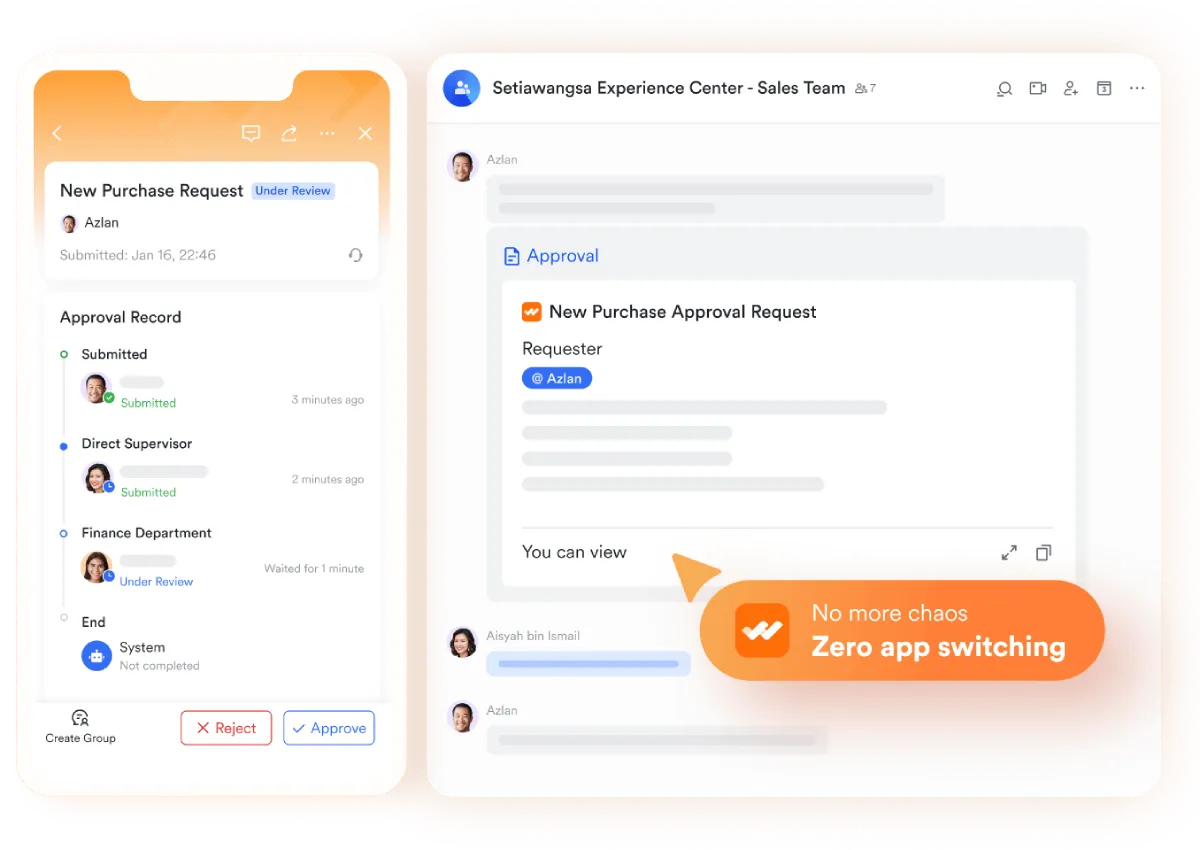From Chaos to Clarity: How Lark Streamlines Modern Business Collaboration
A lot of the time, working together in a business leads to chaos. A lot of tools make people talk to each other in weird ways, miss deadlines, and not know who owns what. Teams waste time looking for updates or doing work that has already been done. People who have this disease are less confident and less able to get things done. To overcome these problems, businesses are using project management tools that include communication, scheduling, documentation, and approvals.
Lark doesn’t make things hard to understand; it makes them clear. Putting all the important jobs into one system helps make sure that information flows efficiently, schedules keep on track, documents change in a simple way, and decisions are made immediately away. Leaders can keep an eye on things, teams can see what’s going on, and workers can stay focused instead of being sidetracked.
Lark Base: Building structured clarity from the start
It might be challenging to keep things in order when information is all over the place. Lark Base fixes this by putting all of your customer, project, and data information in one place. Via Base, you can easily build an automated data hub, a CRM app, or a centralized console for development that makes sure that all of your projects, processes, and information are linked and synced into one place.
Base allows teams create databases that they may change to keep track of delivery, clients, and projects. Linked records allow you keep track of what’s going on between projects, dashboards give leaders information in real time, and filters show you the most important information. Everyone can see the same information, which reduces down on confusion and redundancy, so teams can keep working together. Base makes things that are hard to understand apparent by linking working together to facts that are well-organized.
Lark Messenger: Turning conversations into focused progress
One of the main reasons businesses are so disorganized is that they don’t talk to each other well. Lark Messenger fixes this by making sure that all chats are about the task that has to be done. Messenger keeps all of your communications in one safe, structured place instead of spreading them out over a lot of apps or long email threads.
Dedicated channels let teams keep clients or projects distinct, which cuts down on noise and other distractions. You can upload files, links, or updates to Messenger and they will stay linked to the chat, so you will always know what’s going on. Pinned messages bring attention to key changes, and persistent histories preserve track of why decisions were taken so that teams may keep working together even as they change. Messenger also links directly to tasks and records, so you can see what you need to do right now. This connection between talking and being responsible helps teams stay on track and make progress.
Lark Calendar: Aligning time to remove uncertainty
When schedules don’t match up, people miss deadlines and their work is messy. Lark Calendar makes things easy to grasp by making sure that everyone, including clients, teams, and people, knows what time it is. Shared calendars display everyone deadlines, meetings, and milestones, which makes it less likely that people will have problems with their schedules.
Automatic time zone conversion makes it easy for teams from all around the world to work together. When things happen on a regular basis, it’s easy to plan reviews and check-ins. Linked data and papers make sure that everyone is prepared when they arrive. Smart reminders help people remember their obligations, and being able to access everyone’s calendars across departments helps keep them from contradicting. Calendar makes time a visible and regulated resource, turning uncertainty into a steady beat that helps people work together without delays.
Lark Docs: Creating transparency in evolving work
When several versions of papers don’t match up or feedback gets lost, things might go bad. Lark Docs fixes this by letting teams work on and improve material together in real time. Everyone works from one up-to-date source of truth instead of having to keep track of a bunch of distinct versions.
Comments in the document go directly to parts, which makes it easy to follow. Version histories keep people honest by showing how ideas develop over time. You can make tasks out of ideas in Docs, and you can add finished drafts to events in Calendar or records in Base. You can be sure that the documentation is clear, easy to find, and in line with what is being done by using this integrated approach. This way, working jointly makes things easier instead of harder.
Lark Approval: Embedding accountability through automated workflows
It can also be a concern at work when decisions take too long to make. Lark Approval fixes this by making approvals more consistent and quick. It also makes sure that requests go through the correct channels swiftly and clearly. Employees make requests in an organized way, managers check them over with all the information they need, and records are kept to make sure that everyone is performing their job.
Approval speeds up development by giving those who need to make decisions an automated workflow that sends requests right away. Dashboards show you what you’ve done and what you still need to accomplish, while notifications tell you when to do something. Clear records reveal who gave the go-ahead for what and when, and role-based permissions keep essential workflows safe. Approval makes things go faster and stops confusion that can make it hard to work together by making decisions quickly and readily.
Lark Sheets: Using data to replace assumptions with clarity
Teams don’t know what to do when they have old or missing data. With Lark Sheets, people can work together in real time and get the same version of the truth.
Teams can work collaboratively to keep track of customer data, finances, or performance measures. Everyone who is involved may see any changes right away. Visual dashboards make it easier to look at data by making it easier to understand datasets that are hard to read. It’s easier to report by hand when updates are done automatically, and it’s easy to turn insights into action when tasks and records are linked. Sheets makes sure that decisions are based on facts and not guesswork. This makes it easier to plan and keep track of your progress.
Conclusion
When tools don’t work, tasks aren’t clear, and communication isn’t organized, working together may get messy. Lark makes this mess clear by placing all of your data, communication, scheduling, approvals, and documents in one location. Lark gives companies the tools they need to accomplish their tasks well. Base structures records, Messenger makes it easy to talk to one other, Calendar makes sure schedules match up, Docs keeps track of changing material, Approval provides accountability with automated workflows, and Sheets makes sure data is clear and useful.
Lark helps employees focus on the job that matters instead of squandering time by getting rid of the problems that come up when systems aren’t connected. Leaders can see what’s going on, clients get the same service every time, and teams work together to get things done. When things get difficult, it’s crucial that Lark makes it easy to work together from start to finish.







Leave a Reply